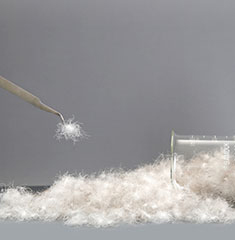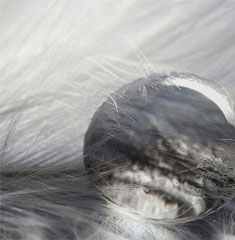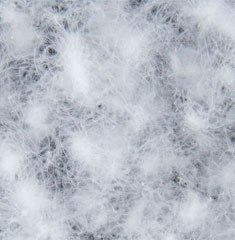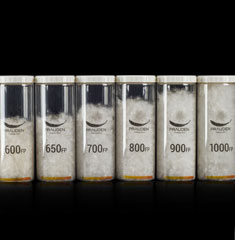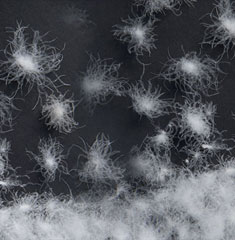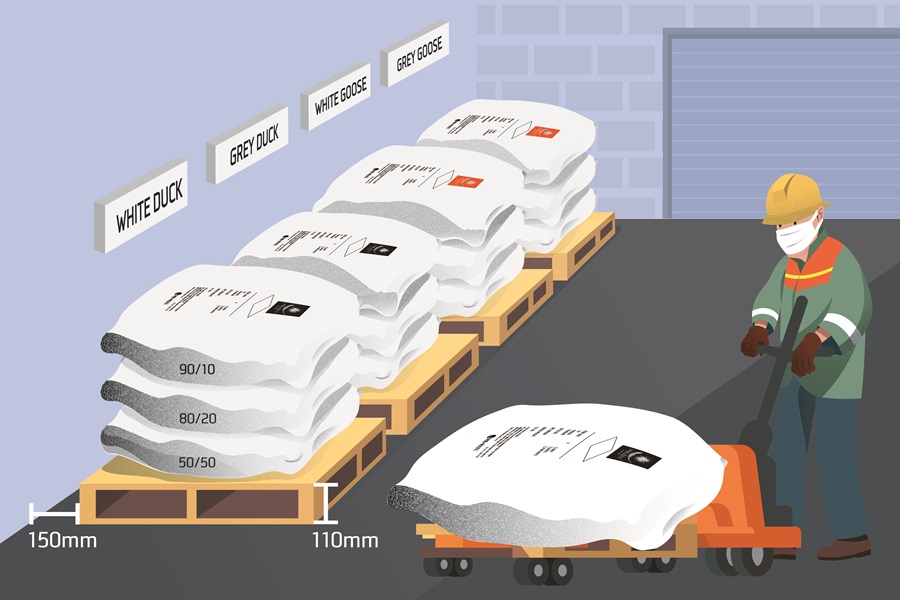
‘Down Operation Manual’ Introduced by the Down Specialist PRAUDEN
2018-07-05
Down fillers are produced by processing natural raw materials with specialized technology. There is a big difference in quality of final products depending on raw materials and production technology. With the best raw material sourcing power and production technology, PRAUDEN supplies only the products that meet the down specifications demanded by users. However, due to the nature of the material, the quality of the down may be greatly changed due to the variance in the level of operation management after it is delivered to the user. Also, since our products are difficult to distinguish from other products only with the naked eye or performance test result, misuse due to misidentification may be possible.
PRAUDEN Down Operation Manual is provided to ensure that the best, optimal down filler supplied to the user is maintained at the highest quality down to the finished product.
PRAUDEN’s down-process manual largely consists of delivered down management methods, down product production and management.
Section A. Down Management
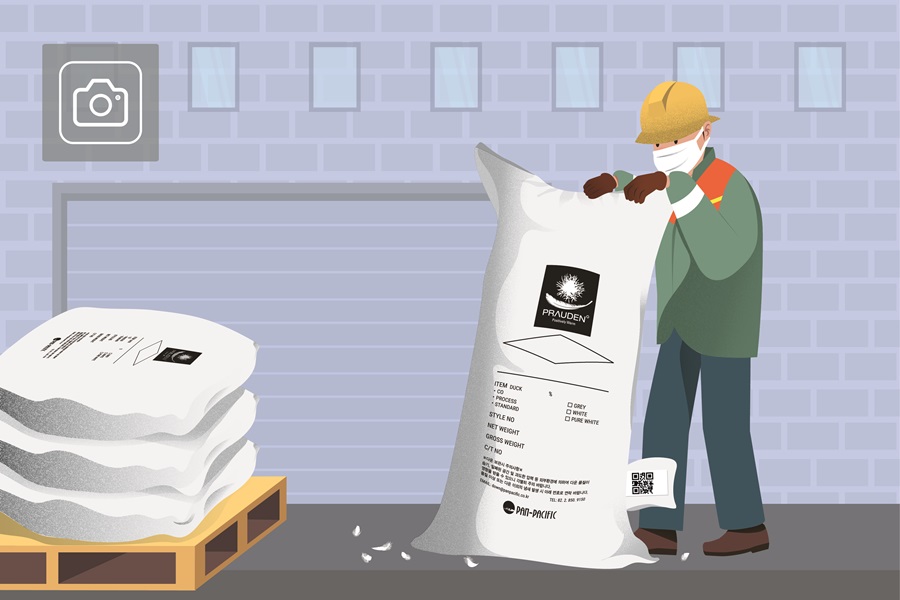
A-1. Down Bale Inspection
A11. Make sure that the bale, a packing unit of the down, is completely sealed in both the upper and lower openings.
A12. All areas of the bale must be sealed at the point of reception.
A small hole that has been opened for preliminary quality inspection must also be sealed with a string or strong tape.
A13. During inspection as per A11, A12, if you have any doubts about repackaging, take a photo without opening the saddle and inform the management and the concerned vendor of down immediately. Do not open the bale until there is a further action from the concerned vendor of down.
A14. If the bale is pressed and banded for transportation convenience, remove the band immediately. Immediately remove any foreign matter or contamination on the surface of the bale.
A15. Ensure that the label inserted between the outer surface of the bale, or between the bale seams is not damaged by careless handling. The label contains the specification mark, the LOT number, the bar code number, and the certification mark.

A-2. Moving and Loading of Down Bale
A21. Down bales must be loaded in a compartmented internal warehouse. Field (outdoor) storage is strictly prohibited.
A22. Use a palette of 110mm or more in thickness when moving the bale. Do not drag the bale on the floor without a pallet as it may cause damage.
A23. Down bales should be sorted according to purchasing company, variety, content and color.
A24. If products under two or more types of standards are stacked together due to lack of stacking space, products with high down to feather ratio should be stacked on top.
A25. Place pallets over 110mm in thickness on the floor first when loading bale. Load at least 150mm away from the wall.
A26. Assuming 20kg-bale, do not load more than five stories.
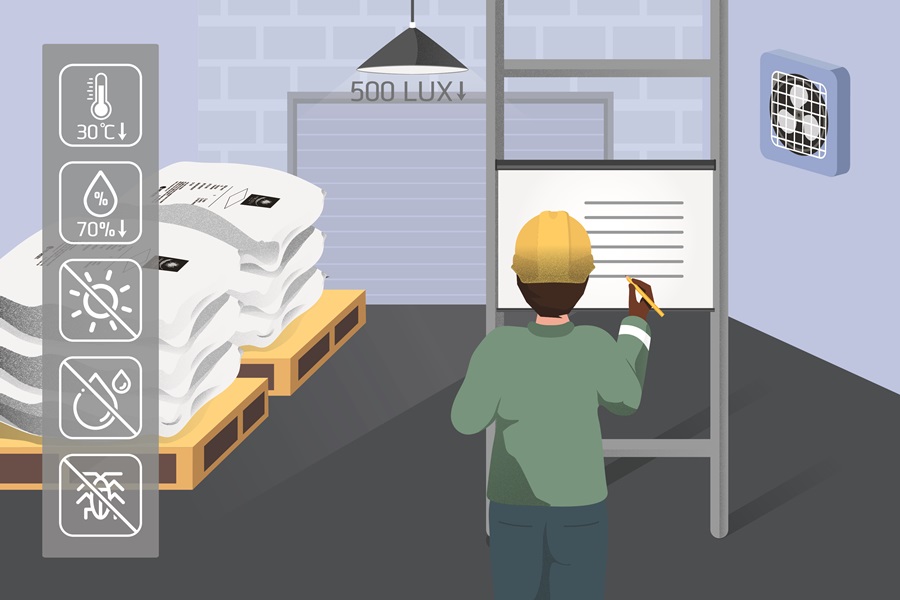
A-3. Storage Warehouse Status
A31. Down warehouses should be well ventilated with mechanical or natural ventilation. The room temperature must be kept below
30℃ and the relative humidity kept below 70%. Avoid direct sunlight and maintain illumination below 500LUX.
A32. The bottom of the warehouse must be completely dry. Maintain a clean condition so that foreign matter such as soil, branches, screws, blades, and staples are not introduced to down.
A33. Do not let worms, rats, and birds enter and contaminate the warehouse. Periodically carry out the pest control work in the warehouse.
A34. A designated manager must document and record down loading situation. Perform separate labeling by mutual agree so that actual workers can distinguish bale.

A-4. Opening of Down Bale and Leftover Management
A41. Workers must wear clean work clothes, gloves and hair caps. Make sure that there is no water or foreign matter in the vicinity before opening the bale.
A42. When unpacking the bale, break the stitched thread on the top with scissors and unzip it. Opening the side or middle of the bale is prohibited. Cutter knife is prohibited because the blade may break and flow down.
A43. Be careful not to drop down the outside of the filling machine when opening the bale. Any down that falls outside must be disposed of and must never be injected into the bale or filling machine. Do not reuse fallen down by collecting by vacuum cleaner.
A44. Any leftover down in the filling machine must not be put back into the bale.
A45. After use, seal the bale with the remaining down, measure the weight, record it on the management ledge and the bale, and store it in the same LOTs. Even with the same specifications, they must not be mixed with down from other purchasing companies or other LOTs for storage.
A46. If there is a shortage during the operation, request additional purchase of the product from the same LOTs from the same company. Even the products with identical standards from the same processor must not be mixed as their exact quality may differ between LOTs.
Section B. Down Filling and Completion
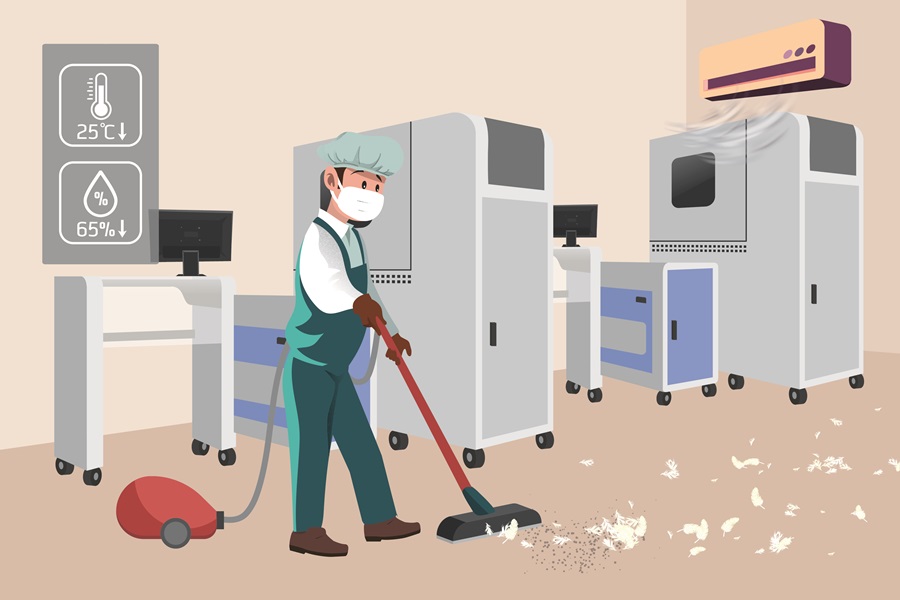
B-1. Down Filling Chamber
B11. Place the down filling chamber close to the down storage location.
B12. Install the facility so that the down does not leak out from the down filling chamber and keep it clean.
B13. The down filling chamber must be kept cool via mechanical air conditioning. The room temperature must be kept below 25℃ and the relative humidity kept below 65%.
B14. Secure separate compartment space or install partitions for each standard.
B15. After complete one work in the compartment, or when replacing the work to another standard, use a vacuum cleaner to remove all residue.
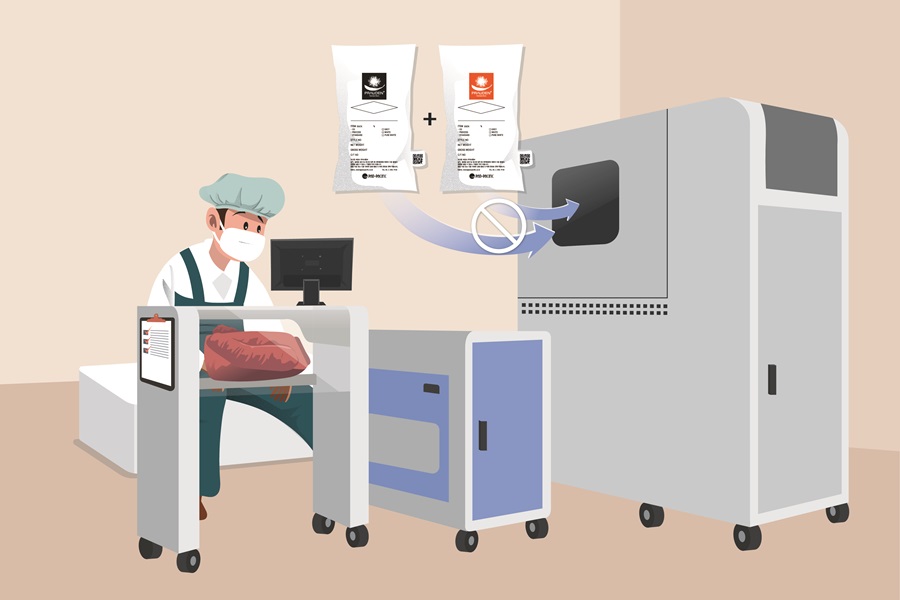
B-2. Down Filling
B21. Make sure that the down filling machine (manual, semi-automatic, automatic) is cleaned with the residue from previous work completely removed before use.
B22. Keep and thoroughly manage a cleaning status logbook on the down filling machine. In the logbook, record the cleaning date, cleaning status, and signature of the person in charge.
B23. When using the pneumatic down filling machine, check the water cup every day to prevent overflowing of water or mold.
B24. The speed of the pneumatic down filling machine should be
set not to exceed 5g/sec so that the down in the panel will not be overturned and lopsided.
B25. Do not attempt to spread the down evenly by beating the panel as doing so breaks the down ball and rapidly deteriorates the quality.
B26. Even the products with identical standards from the same processor must not be mixed in a same style, as their exact quality may differ between LOTs.
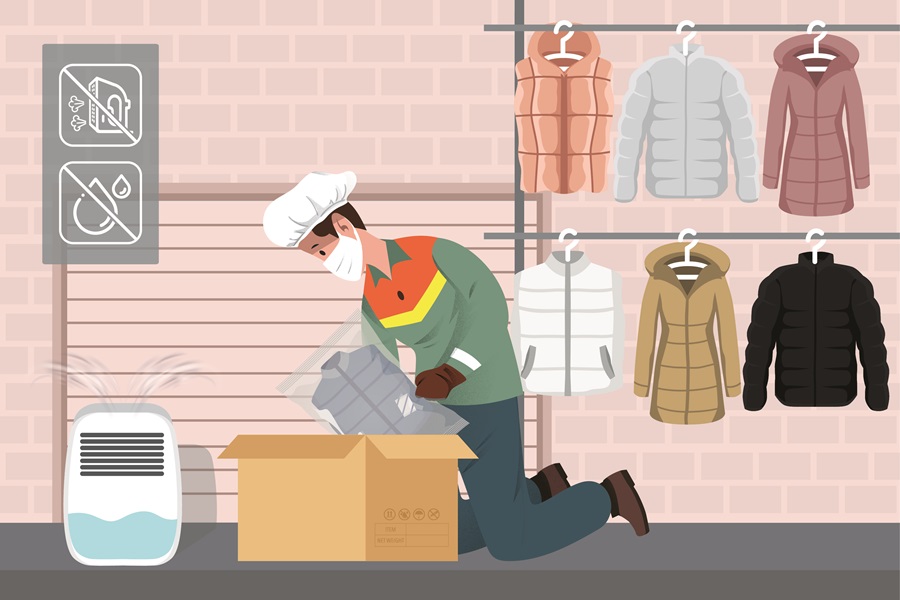
B-3. Product Completion
B31. After completion of the down filling, thoroughly remove any residue attached to the panel before sewing (It is likely customers recognize residues broke its way out of products).
B32. Do not use steam for ironing down products.
B33. After completion of the down product, remove the moisture by storing it in a dehumidifying room or in a well-ventilated room for over 24 hours.
B34. Put the dehumidifier together when packing the product into the polyester bag.
B35. When packing in a box, adjust the amount per box so that it does not compress more than half the volume of the finished product.
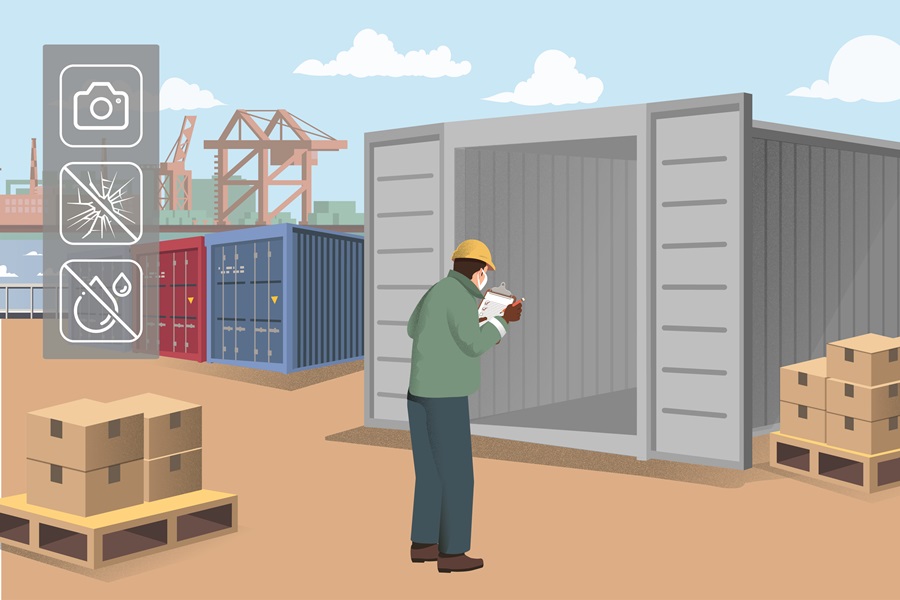
B-4. Product Transportation
B41. The product box must always be protected from moisture.
B42. Inspect the interior of the container for shipment to ensure that there are no foreign objects, moisture, or leaks.
B43. Photograph and record that status of the container before, during and after loading.
B44. When transporting containers, there is a high possibility of product damage due to dew condensation inside the container or container. Thus, a thorough inspection of product for any defects after opening must be performed.
B45. Depending on the result of inspection, open the box and product packaging if necessary, and dehumidify well in a well-ventilated place.
This can be downloaded as a PDF file here . We hope that the down operation manual will help you maintain the finest quality of down you receive from PRAUDEN all the way up to the finished product.
By PRAUDEN Marketing Part, Lee Su Kyung






